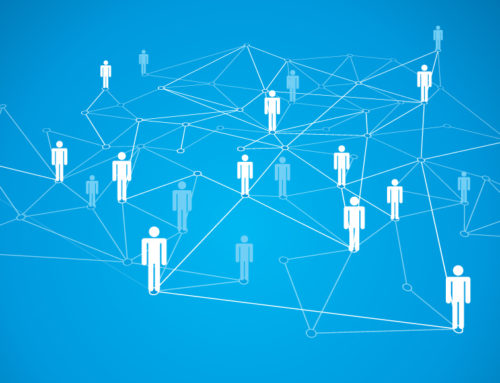“The food system needs to get to a point where higher-quality products are affordable to everybody. Once you reach massive scale, things can ramp up and prices will come down. Mass-produced food is subsidized by the government. If you took those same subsidies and granted them to small farmers, their prices would come down.” - Benzi Ronen
Food Systems Innovation
Our food supply chain is both incredibly efficient and inefficient all at the same time. The system is efficient in that it produces huge quantities of food at low prices and is able to move these products around the world at low cost. But it is also inefficient in that the supply chain is industrialized and centralized to the point that it’s an enormous consumer of land, energy and creates many social, health and environmental externalities that the public are becoming less tolerant of. Finding alternatives to our current linear food system is a central challenge that is being tackled from many different points along the food value chain.
A good example of an alternative food system would be food hubs. Food hubs were one of the first post-industrial alternative food systems to create collaborative platforms for connecting peer-to-peer. Food hubs offer an alternative to traditional agribusiness models by reinstating small farms as the food source for the community. They aim to forge close relationships between farmer and end user, providing essential services to add value along the entire supply chain. They typically directly distribute fresh, high-quality food to institutions, retailers, restaurants, and schools. They also create community partnerships that promote knowledge of and access to local food.
Food hubs have been around for a while now, but with information technology we have the capacity to extend and scale the concept. The Internet based platforms of today give us powerful tools for organization and collaboration that are being harnessed by the disruptively minded towards revolutionizing our food systems. Agriculture and the food industry are starting to join the era of platform economics and the rapid development of online platforms is not exclusively a matter of matching supply and demand. Online platforms have emerged alongside our traditional system and are increasingly affecting all areas of the supply chain. Whether it is on the farm through precision agriculture and analytics; in the supply chain enabling peer-to-peer coordination and recycling; or downstream with the end user and behavioural aspects, helping to inform, educate and enable them to explore and customize their dietary needs. From “Ag Tech” startups developing ways to help farmers increase yields and cut costs, through weather information, analytics, soil monitoring etc. To major retailers using data to track purchases, and monitor the quality of perishable goods, enabling them to meet consumer demand more effectively. All along the supply chain we can see opportunities for disruption - through IT platforms - that are starting to be capitalized on.
“We call it the unbundling of the supermarket. Over the last 100 years supermarkets have been moving in the direction of one-stop shopping. We wound up with Walmart. What’s happening now is that your phone is your one-stop shop. You can buy and optimize by category. You can buy perishables and have them delivered to your door” - Benzi Ronen
Food Platforms
One of the best examples of a food platform is Farmigo. Farmigo is an online farmers’ market that connects consumers, workplaces, schools, apartment complexes and community centers directly to local farms. The company is a certified B Corporation and has raised $8 million in financing. Farmigo started out providing technology for CSA (Community Supported Agriculture) farms across america to connect them to local communities and helping them deliver produce to over 100,000 families. In December 2012, the company launched Farmigo food communities which leverages their existing relationships with farms to accelerate the adoption of an “alternative food system” beyond the current 1% participating in CSAs.
Using technology and a community-based business model, Farmigo connects local farms directly to consumers through food communities—such as workplaces, schools, apartment complexes and community centers. According to Upstart Business Journal, food communities are started and led by community Organizers who serve as catalysts for an alternative food system. Organizers sign-up through Farmigo’s website, encourage members to join their food community and work with regional Farmigo representatives to manage delivery and pick up to their site. According to Fast Company, once a food community is established, members can order their selection online from a variety of local farms and have it delivered weekly or bi-weekly to their food community site. Farmigo coordinates with complimentary local farms located within 100 miles of a community to deliver food harvested within 48 hours of drop off.
Copia is another example of a food platform. Based in California it uses technology to connect donnas with communities in need, it uses technology to streamline the process of food donation and distribution, enabling the providers to receive enhanced tax deductions and reduce disposal costs, while effortlessly feeding those in need. A huge aspect of Copia is the app. The founder Komal Ahmad talks about it as such: “I think of Copia as the Uber for food recovery, so you just launch the app, you tell us your pickup location and you tell us how much food you have and how many trays it will fill and you just post it and our algorithm will then match that amount of food to the nearest non profit that are in need along with a driver that will come pick up the food, and then as a full circle we will tell you how many people you have fed and testimonials from the actual people, so you get to see what two minutes of your time using Copia actually did.”
Likewise VizEat is another example of a food platform which is present in over 60 countries. This platform allows tourists to enjoy the customary specialty of some place by paying online and then can enjoy the food being offered at the host’s home. VizEat calls itself a “trusted community marketplace for people to offer, discover and book authentic meals in local homes around the world.
Synergies & Collaboration
Collaboration is a key part in developing a functional food platform of producers, suppliers and engaged end users. Collaboration means working together, connecting people to find synergies and using those synergies to really fuel and add value to the system. Instead of using economics of scale it is about using intelligent design to connect the right people, organizations and processes in enabling the desired outcomes to emerge. This is part of the idea of harnessing complexity through intelligent design instead of trying to externalize it. Instead of trying to reduce food production systems down to monoculture, all on one level so as to reduce friction and control input and outputs towards maximizing them, alternative food systems try to harness this diversity as a source of greater overall productivity through synergies. It is about the fact that if we design a polyculture system effectively, connecting all the right elements to create synergies, it can deliver many more products than a single monoculture system; but of course it is more complex and it does take intelligent design.
West Louisville FoodPort is one such example of an attempt to build a food ecosystem based on synergies. The FoodPort is different to the other platforms in that it is offline. Based on the success of projects like Seed Capital Kentucky the initiative is now about to apply similar concepts to food, developing an urban business park housing multiple companies all across the food chain. FoodPort will locate food-related businesses in one place where they can buy food from local farmers and hire neighbors for jobs. A 24 acre site housing companies engaged in the production of food, education, distribution, processing, storage retail and waste recycling, the aim is to develop synergies between them similar to an industrial symbiosis. Through synergies these companies get more productive because they are located near each other, allowing them to develop feedback loops and as they become more productive they can buy more products from regional farmers, this is an example of economics of community in stead of economics of scale.
New Technologies
Revolutionizing our food systems will take more than IT it will also require new production and processing technologies. Whereas the Green Revolution was all about economies of scale and centralization, what we see emerging today is very different, it is about smart grow systems, compact dense food production in small resource efficient hydroponic environments. A key element of next generation food systems will be that of distributed local production, some degree of self sufficiency and “grow your own” capabilities. But for this to be a reality it will need to be enabled by technology. Hydroponic grow systems are emerging as a potential driver of this process, allowing for dense local production that is environmentally friendly in its efficient use of space, water and other resources.
Sky Greens a company in Singapore is an example of this, they develop vertical farming that can be x10 more efficient using much less inputs. Sky Greens’ owner Jack Ing says he is confident that he can compete on price with imported food. Three years into his experiment he says his operating costs are only a quarter of what it would cost to run a conventional farm. And since he is local his transportation costs are also minimal, and of course they can be fresher due to their proximity to consumption.
Sky Greens describes itself as such: “Sky Greens is the innovator and builder of the world’s first low carbon hydraulic water-driven vertical farming system. This commitment towards innovative green urban solution marked the beginning of our journey in constantly re-inventing low carbon footprint agritech in fulfilling food supply security and food safety needs.” They say their mission is to “constantly provide improved agricultural solutions with minimal impact on land, water and energy resources through invention and innovation; to help cities actualise food supply security and food safety targets; to promote and enable seamless integration of low carbon footprint agriculture into urban living.”
Hydroponic grow systems for the provision of food is still a relatively niche area and not easy to build a business on, but this will likely change considerably in the coming decades given current trends toward local production and sustainable methods.
Consumer Behaviour
Combining new grow systems technology with food platforms, for organization, and peer-to-peer distribution is certainly a very interesting area of development within food systems innovation, that could radically change how we produce and distribute food. But actually achieving desired outcomes would require at least one more critical element, that of consumer behaviour. The whole last mile to the food chain has become almost completely usurped by marketing which leads to very poor nutritional outcomes, getting all the other elements to the system working while neglecting this will likely fail to achieve the real improvements in nutritional outcomes that are now possible.
We’re beginning to see emerging experimental data which really makes clear the impact that advertising can have on food choices. For example In a study that looked at three different categories of food there is a marked uplift in sales when products are put on the end of the aisle. By simply changing where the products are placed on shelves this can drive a 50% increase in sales for some products like carbonate drinks.
One other very interesting experiment looking a consumer psychology was done by a lab in Liverpool where they brought children in on a Saturday morning and they showed them some films, there was during this an advertisement break when they were either shown advertisements for food or for toys, they were then offered snacks after the film. The children consumed 2 to 3 times more of the snacks after seeing the advertisements vs. not seeing them. The obese children proved to be even more responsive to these cues and saw a greater increase in their consumption.
Here again food platforms can offer us a way of approaching this. By allowing us to actually trace the full process from food purchase and consumption all the way through to health outcomes they can make explicit the health costs of our choices. The food industry at present externalizes a lot of dietary related health cost out to society by inducing people to purchase poor quality food and then expecting the health care system to pick up the bill at the end of the process. What is required is much greater traceability, transparency and information to enable people to see from end-to-end. This is very much similar to what has happened with cigarettes where they have made the effect of smoking real and present every time the consumer makes that choice by simply placing warning signs on the pack and making sure that they are fully informed as to the effects of their actions.
For food platforms to fully deliver outcomes they need to embrace this psychological dimension to the process, providing information, helping users craft their diets, inform them and incentivize them towards healthy options, using gamification and socialization to build community around constructive diet and nutritional outcomes.
Conclusion
Solving the limitations of our current food system will require system wide change, alternative solutions that build in a new set of design principles that are decentralized and nonlinear in nature, harnessing diversity and creating resilience. As with other industries the platform model will be key to this as it enables a much higher level of coordination and transparency through integration. True next generation food systems may not be a reality yet, but they will likely lie at the intersection of some of the current developments talked about above. They will need to be sustainable in production, through alternative agricultural methods like organic farming and resource efficient hydroponic grow systems. They will need to be more decentralized able to connect producers to consumers almost directly through online platforms. They will also need to be more efficient, using IT to track processes across their lifecycle, enable synergies and close loops so as to be effective at recycling waste. And finally they will need to place the end user at the center of the food value network, working to truly understand their customized health and nutritional needs and work with them towards delivering nutritional outcomes.





